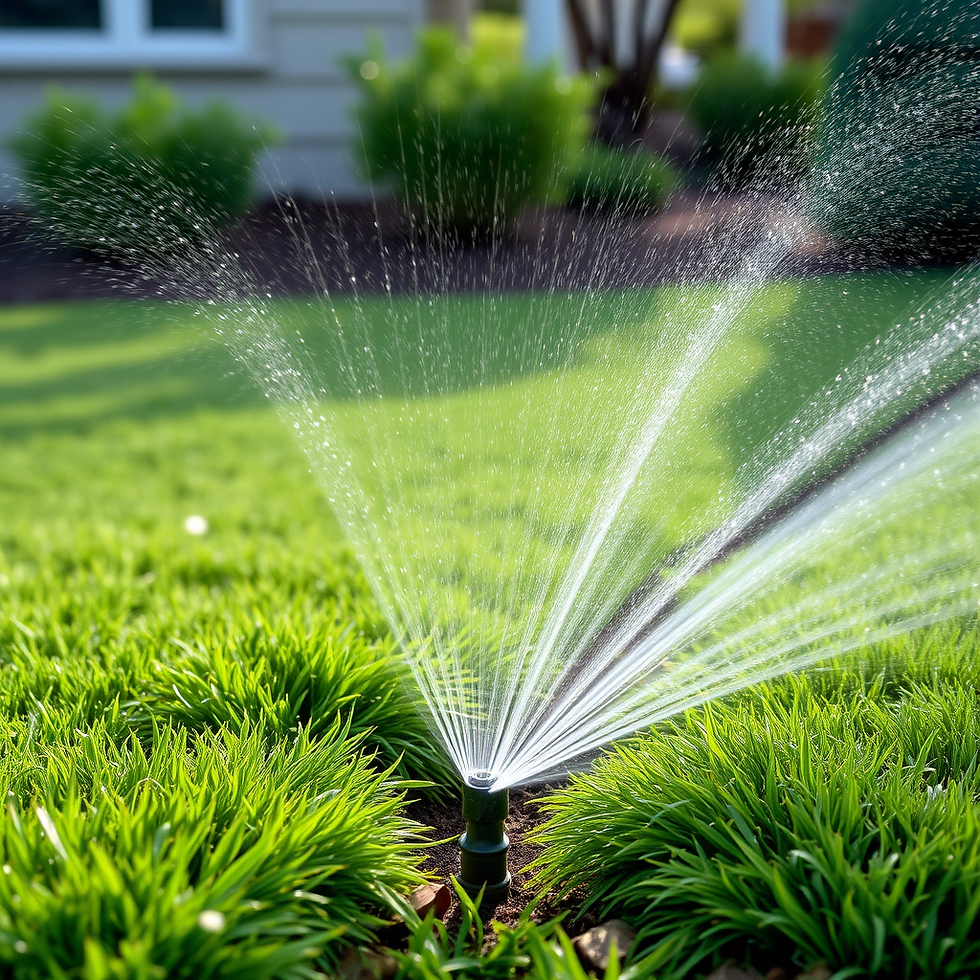
Water Water Everywhere- Now Give Them a Drink!
- Laura Moses
- Jul 22
- 4 min read
💧 Myth‑Busting: Watering in the Sun Does Not Burn Petals
Let’s start by busting a garden myth that just won’t die:
Watering your plants in full sun does NOT burn the leaves or flowers.
You may have seen it online — someone posts a photo of pale or discolored blooms, and the first chorus of advice is: “You must’ve watered in the sun.” One gardener recently shared a picture of her impatiens with faded centers, and several folks blamed sun-scorch caused by water droplets. But here’s the truth: that’s not how water or sunlight works.

University extension services across North America — including Washington State, Oregon, and Utah — have clearly proven through research that water droplets do not act like magnifying glasses on petals or foliage. Watering during the day will not scorch your plants.
What does harm your plants? Dehydration.
If you delay watering on a hot day because you’re trying to avoid the “burn myth,” you’re doing far more damage than good. Dehydration can cause:
-Crispy or scorched leaf margins
-Bud drop or stunted blooms
-Root stress and dieback, especially in young or newly planted stock
If your plants need a drink, give it to them — no matter the time of day.
🌸 Why Flowers Sometimes Look Bleached
When petals appear bleached, papery, or faded, it’s rarely about watering. The true causes are typically:
-Sunscald or sudden exposure – Especially when shade plants get moved or over-pruned.
-Natural bloom aging – Petals break down and discolor as they near the end of their cycle.
-Fungal issues – Gray mold or downy mildew can damage petal tissue.
-Thrips or viruses – Certain pests or infections can cause irregular fading or color splotching.
So, while it may look like water damage, it almost never is. Trust the science, not the hearsay.
🌧 Not All Rain Is Helpful
Now let’s talk about something else gardeners often misunderstand: rain.
Just because it rained doesn’t mean your plants got watered.
Those quick, torrential summer downpours? They’re dramatic — but almost useless. The water hits the dry surface, then runs off down your lawn or into the street before it even penetrates the soil. Your perennials and trees are left just as thirsty as they were before.

What your plants actually need is a long, slow, soaking rain — the kind that lasts most of the day and gives the soil time to absorb water deep into the root zone.
If it didn’t rain all day (or overnight), assume your plants didn’t get what they need. Especially in the heat of summer, a sprinkler or hose is more reliable than a five-minute cloudburst.
✅ How to Water Effectively: Real Guidelines That Work
Forget the clock and follow the plants. Here's a solid approach to watering that actually supports healthy roots and long-term growth:
🌳 New Trees & Large Shrubs
Every other day for two weeks after planting
Then once per week until the ground freezes
Soak deeply to encourage deep root establishment
🌿 Perennials
Use a sprinkler for 30 minutes, 3 times a week during establishment — this mimics about 1" of rainfall
For hotter or fast-draining soils, increase to 45 minutes, 2 times a week to push moisture down where roots can reach it
Once established, reduce frequency but continue deep soaks during dry spells
🌱 Lawns
Use the “tuna can method” — place an empty can under the sprinkler. When it fills to 1", you’ve watered enough.
Aim for 1" per week, spread over 2–3 sessions for optimal turf health
💡 A Word on Irrigation Systems

Here’s something most people don’t realize:
Irrigation systems are designed for lawns — not for establishing plants.
Those short cycles that come on for 5–10 minutes a day? Perfect for turfgrass. Completely inadequate for shrubs, trees, or perennials.
If you’re installing plants in areas with existing irrigation:
Reprogram your system. Set bed zones to run longer, less frequently — think 30+ minutes per session.
Water deeply. Plants need moisture where their roots are, not a surface mist.
Supplement as needed. A hand watering or soaker hose is often necessary for newly installed plants, especially if your irrigation is inflexible.
Watering new stock on a lawn cycle is like trying to bathe by walking through a misting fan — it won’t cut it.
🌿 Bottom Line for Gardeners

1. You can absolutely water in the sun. Your plants will not burn from it.
2. Bleached petals aren’t caused by watering — it’s often sun, age, pests, or fungus.
3. Not all rain counts. Only long, soaking rains actually hydrate your soil.
4. Irrigation systems need adjusting if you’re planting anything other than lawn.
5. For new trees, water every other day for two weeks, then once a week.
6. Perennials need 1" of water per week — delivered slowly and deeply.
Your plants don’t care what time it is — they care about moisture at the roots. So trust your eyes, check your soil, and water with intention.
Because nothing replaces a deep, thorough drink. 💦🌸
🔗 Explore More from Fine Lines Landscape & Designs
For tips on creating beautiful gardens and maintenance strategies, check out these helpful resources:
Learn about our Landscaping Services — covering native planting, stonework, fruit-tree care, and everything between
Discover our hands-on Workshops — from moss art to edible gardens, perfect for DIYers and families
Learn about great options to soften hardscaping on my other blog post. Tall Perennials that Soften Hardscaping
Please don't hesitate to contact us if you require more help with your plants and yard. Contact Us
%20-%20960X960%20(1).png)



Comments